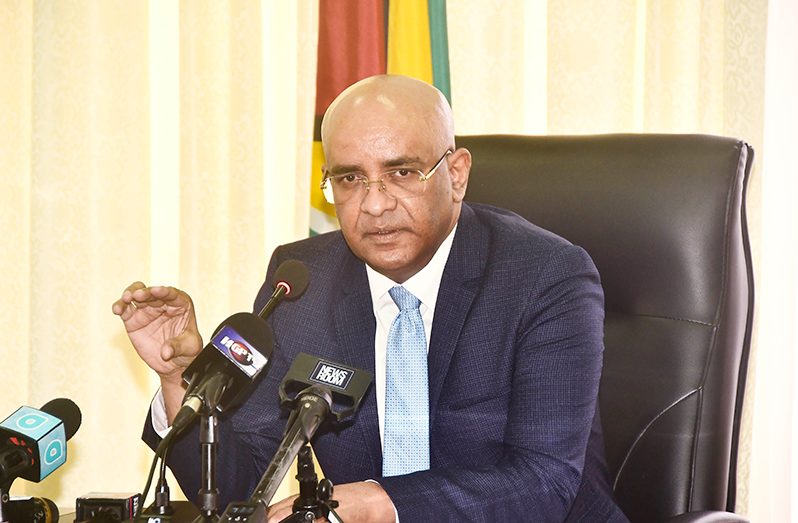THE government is currently pushing ExxonMobil Guyana to complete a Gas Utilisation Plan, while it is also working on a National Gas Strategy (NGS), to officially outline what will be done with the natural gas that has been found offshore.
The NGS could come about before the end of the year, while the government is hopeful that Exxon’s Gas Utilisation Plan would be completed very soon.
This was revealed by the Vice President, Dr. Bharrat Jagdeo, on Friday, during a press conference held at the Arthur Chung Conference Centre where he spoke about developments in the energy sector.
The NGS will be one of several areas where the government is collaborating with the Government of India, as bilateral agreements on the development of Guyana’s remaining offshore resources continue to be considered.
“We’re going to get some of the consultants from India and other places to work with us on having a National Gas Strategy, which will determine what we do with the gas that has been found offshore so far. It then deals with the potential areas for bilateral cooperation in an exploration and developing of our natural resources,” the Vice President explained.
“I can’t give you a timeline now [for the completion of the NGS], but we are working on it. But before the end of this year, we will have that strategy in place.”
Along with the discovery of over 11 billion barrels of oil offshore, Guyana has a substantial amount of associated natural gas. Though some amount of the gas is being reinjected into the wells, there is a considerable amount that could be utilised for other purposes.
According to the Vice President, a lot of interest has been expressed as to how the gas could be utilised.
“Would it be fertilizer; buy, sell, plant, etc. … So, we are moving ahead faster on that bit,” Dr Jagdeo said.
Though ExxonMobil had argued at the beginning that they need all of the associated gas pumped back into the wells to keep the quality of the wells up, the Vice President shared that the government also has a different view on this matter.
“So that is why the gas utilisation plan has to be done and we are working on our gas strategy and the discussions have to take place about how we monetise the gas here; the gas that are associated gas,” Dr. Jagdeo said.
Additionally, for discoveries where the majority of the find has been gas; if the companies do not plan to make use of the gas, the government is considering the possibility of having the companies relinquish the undeveloped fields in order to find use for it.
“They’d have to relinquish it and we may find other people who are prepared to utilise the gas and I’m saying this openly. We said it before, so that is what we are working on, to define the bigger strategy for the gas industry,” Dr. Jagdeo informed.
The Gas to Energy (GTE) project currently being developed by the government is one area in which it has already devised use for some of the natural gas that is offshore.
Under this project, a minimum of 50 million standard cubic feet of gas per day (mmscfd) will be transported from the Liza Phase One and Liza Phase Two Floating, Production, Storage, and Offloading (FPSO) vessels, to a power plant and Natural Gas Liquids (NGL) facility that will be built in Wales, on the West Bank Demerara.
The conversion of natural gas from ExxonMobil’s offshore operations to electricity, is a key component of the government’s objective to lower energy costs by at least 50 per cent through an energy mix which incorporates gas, solar, wind, and hydro power.
Aside from the natural gas being used to fuel the power plant, Guyana could generate between $70 – $100 million from the sale of cooking gas produced by the NGL facility.
Though the government has an arrangement with ExxonMobil for the supply of 50 million mmscfd, the 12 inch, 220km long pipeline, which will be used to channel the gas on shore, will have the capacity to push as much 120 mmscfd.
On Friday, the Vice President made it known that the government is looking to start discussions very early about utilising the pipeline to the full capacity.
“That means that maybe another 70 to 80 million cubic feet of gas every day. How do we use that? That is what we are discussing now,” Dr. Jagdeo said.



.jpg)









